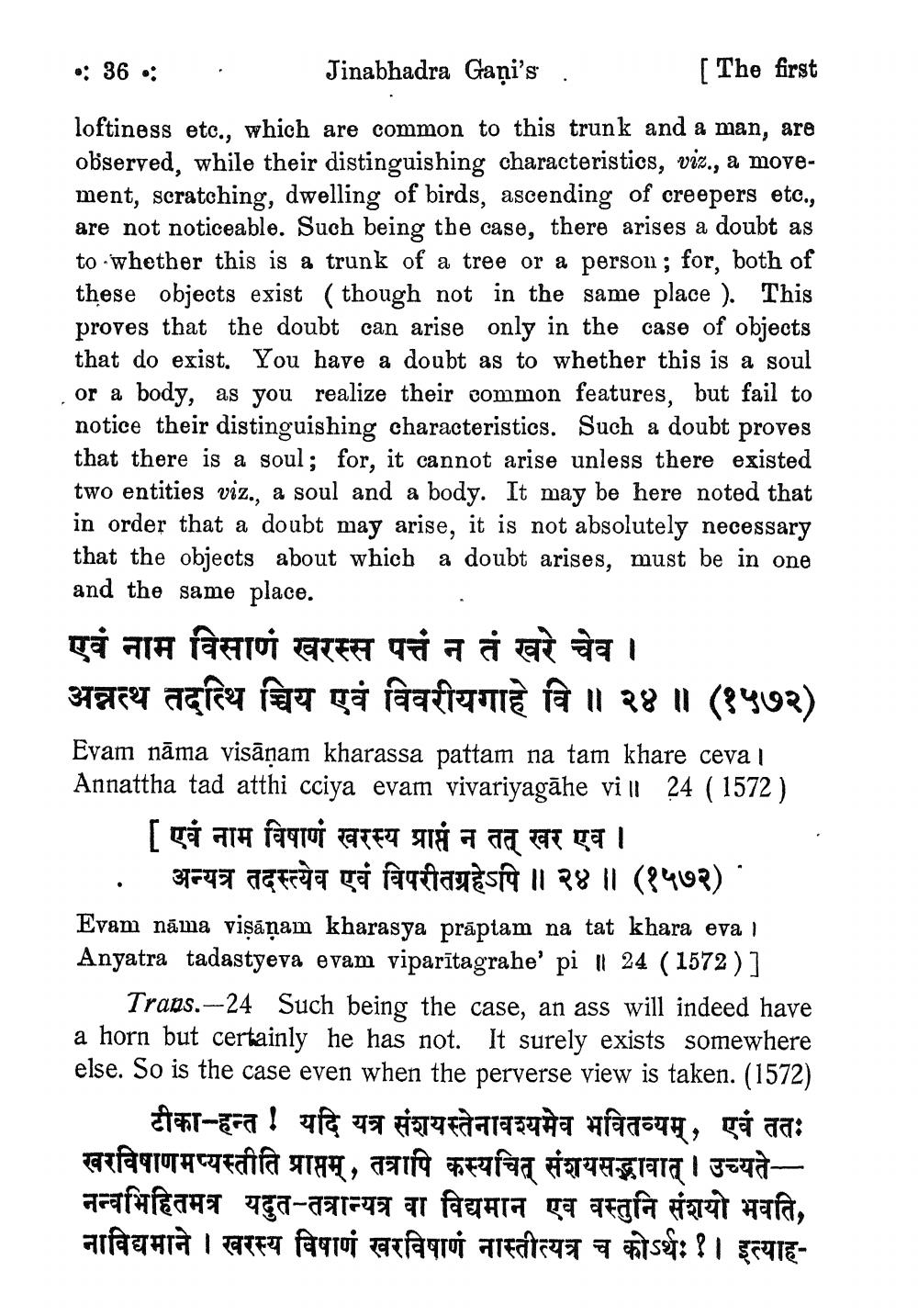________________
•: 36 •
.
Jinabhadra Gaņi's.
[The first
loftiness etc., which are common to this trunk and a man, are observed, while their distinguishing characteristics, viz., a movement, scratching, dwelling of birds, ascending of creepers etc., are not noticeable. Such being the case, there arises a doubt as to whether this is a trunk of a tree or a person ; for, both of these objects exist (though not in the same place ). This proves that the doubt can arise only in the case of objects that do exist. You have a doubt as to whether this is a soul , or a body, as you realize their common features, but fail to notice their distinguishing characteristics. Such a doubt proves that there is a soul; for, it cannot arise unless there existed two entities viz., a soul and a body. It may be here noted that in order that a doubt may arise, it is not absolutely necessary that the objects about which a doubt arises, must be in one and the same place. एवं नाम विसाणं खरस्स पत्तं न तं खरे चेव । अन्नत्थ तदत्थि च्चिय एवं विवरीयगाहे वि ॥ २४ ॥ (१५७२) Evam nāma visānam kharassa pattam na tam khare ceva | Annattha tad atthi cciya evam vivariyagāhe vill 24 ( 1572 )
[ एवं नाम विषाणं खरस्य प्राप्तं न तत् खर एव ।। . अन्यत्र तदस्त्येव एवं विपरीतग्रहेऽपि ॥ २४ ॥ (१५७२) Evam nāma vişāņam kharasya prāptam na tat khara eva i Anyatra tadastyeva evam viparitagrahe' pi ॥ 24 (1572)]
Trans.--24 Such being the case, an ass will indeed have a horn but certainly he has not. It surely exists somewhere else. So is the case even when the perverse view is taken. (1572) ____टीका-हन्त ! यदि यत्र संशयस्तेनावश्यमेव भवितव्यम् , एवं ततः खरविषाणमप्यस्तीति प्राप्तम् , तत्रापि कस्यचित् संशयसद्भावात् । उच्यतेनन्वभिहितमत्र यदुत-तत्रान्यत्र वा विद्यमान एव वस्तुनि संशयो भवति, नाविद्यमाने । खरस्य विषाणं खरविषाणं नास्तीत्यत्र च कोऽर्थः १ । इत्याह




